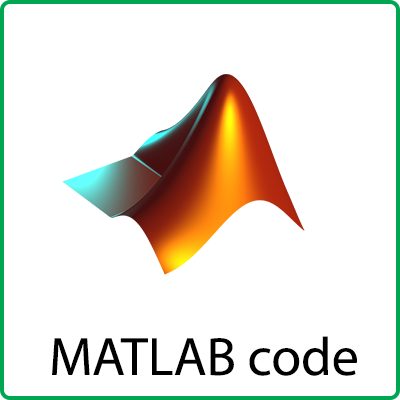Description
Abstract
In recent years, there has been a significant growth in the development and application of the evolutionary algorithms. The structure of most algorithms had been obtained based on a phenomenon in nature.
In this study, a new algorithm is introduced to solve the continuous optimization problems. This algorithm is based on a simple seeking logic. The SEA divides the seeking area and seekers into several sections in each step and allocates every seeking group to a specific region. The motion of seekers in the regions is based on a simple evolutionary trend but none of the seekers is permitted to enter other regions. In the next stage, the regions with the best value of the objective function are selected and divided into several smaller sections and the seeker groups will be allocated to them accordingly. These steps will be continued until the stop condition is met. In order to assess the performance of this algorithm, from the available samples in articles, the most visited algorithms have been employed. The gained results show the advantage of the Seeker Evolutionary Algorithm in comparison to these algorithms.
Keywords
Intelligent optimization, Meta-heuristic algorithms, Global optimization, Seeker Evolutionary Algorithm (SEA), Continuous Optimization
References :
| [1] | Melanie, M. An introduction to genetic algorithms. Cambridge, Massachusetts London, England, Fifth printing, 3,1999.
|
| [2] | Sivanandam, S. N., & Deepa, S. N. Introduction to genetic algorithms. Springer Publishing Company, Incorporated, 2007.
|
| [3] | Herrera, F., Lozano, M., & Verdegay, J. L. Tackling real-coded genetic algorithms: Operators and tools for behavioural analysis. Artificial intelligence review, 12(4), 265-319, 1998.
|
| [4] | Kirkpatrick, S., Jr., D. G., & Vecchi, M. P. Optimization by simulated annealing. science, 220(4598), 671-680, 1983.
|
| [5] | De Castro, L. N., & Timmis, J. I. Artificial immune systems as a novel soft computing paradigm. Soft computing, 7(8), 526-544, 2003.
|
| [6] | Glover, F., & Laguna, M. Tabu search (Vol. 22). Boston: Kluwer academic publishers, 1997.
|
| [7] | Dorigo, M., Caro, G. D., & Gambardella, L. M. Ant algorithms for discrete optimization. Artificial life, 5(2), 137-172, 1999.
|
| [8] | Kennedy, J., & Eberhart, R. Particle swarm optimization. In Neural Networks, 1995. Proceedings., IEEE International Conference on (Vol. 4, pp. 1942-1948). IEEE, 1995.
|
| [9] | Chen, D., & Zhao, C. Particle swarm optimization with adaptive population size and its application. Applied Soft Computing, 9(1), 39-48, 2009.
|
| [10] | Storn, R., & Price, K. Differential evolution–a simple and efficient heuristic for global optimization over continuous spaces. Journal of global optimization, 11(4), 341-359, 1997.
|
| [11] | Geem, Z. W., Kim, J. H., & Loganathan, G. V. A new heuristic optimization algorithm: harmony search. Simulation, 76(2), 60-68, 2001.
|
| [12] | Yang, X. S., & Deb, S. Cuckoo search via Lévy flights. In Nature & Biologically Inspired Computing, NaBIC. World Congress on (pp. 210-214). IEEE, 2009.
|
| [13] | Yang, X. S. Firefly algorithms for multimodal optimization. In Stochastic algorithms: foundations and applications (pp. 169-178). Springer Berlin Heidelberg, 2009.
|
| [14] | Yang, X. S. Firefly algorithm, Levy flights and global optimization. In Research and Development in Intelligent Systems XXVI (pp. 209-218). Springer London, 2010.
|
| [15] | Yang, X. S. A new metaheuristic bat-inspired algorithm. In Nature Inspired Cooperative Strategies for Optimization (NICSO 2010) (pp. 65-74). Springer Berlin Heidelberg, 2010.
|
| [16] | Rashedi, E., Nezamabadi-Pour, H., & Saryazdi, S. GSA: a gravitational search algorithm. Information sciences, 179(13), 2232-2248, 2009.
|
| [17] | Karaboga, D., & Basturk, B. A powerful and efficient algorithm for numerical function optimization: artificial bee colony (ABC) algorithm. Journal of global optimization, 39(3), 459-471, 2007.
|
| [18] | Karaboga, D., & Akay, B. Proportional—Integral—Derivative Controller Design by Using Artificial Bee Colony, Harmony Search, and the Bees Algorithms. Proceedings of the Institution of Mechanical Engineers, Part I: Journal of Systems and Control Engineering, 224(7), 869-883, 2010.
|
| [19] | Atashpaz-Gargari, E., & Lucas, C. Imperialist competitive algorithm: an algorithm for optimization inspired by imperialistic competition. In Evolutionary Computation, 2007. CEC 2007. IEEE Congress on (pp. 4661-4667). IEEE, 2007.
|
| [20] | Talatahari, S., Farahmand Azar, B., Sheikholeslami, R., & Gandomi, A. H. Imperialist competitive algorithm combined with chaos for global optimization. Communications in Nonlinear Science and Numerical Simulation, 17(3), 1312-1319, 2012.
|
| [21] | Kaveh, A., & Talatahari, S. Optimum design of skeletal structures using imperialist competitive algorithm. Computers & structures, 88(21), 1220-1229, 2010.
|
| [22] | Rajabioun, R. Cuckoo optimization algorithm. Applied Soft Computing, 11(8), 5508-5518, 2011.
|
| [23] | Li, X. L. A new intelligent optimization-artificial fish swarm algorithm. Doctor thesis, Zhejiang University of Zhejiang, China, 2003.
|
| [24] | Molga, M., & Smutnicki, C. Test functions for optimization needs. Test functions for optimization needs, 2005.
|



Reviews
There are no reviews yet.